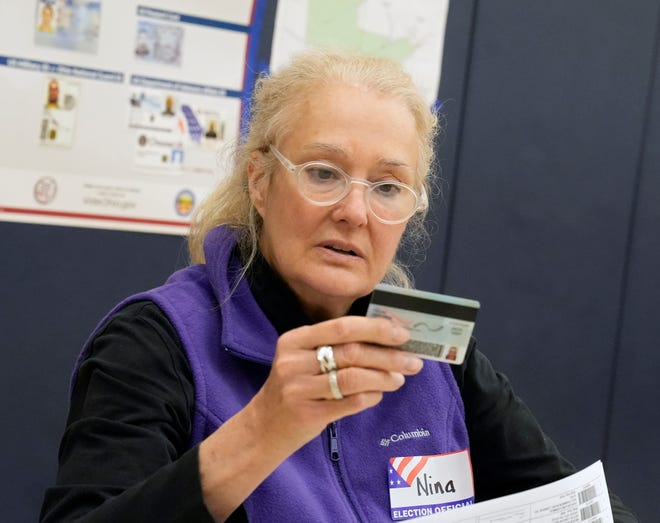

Ohio conducted its first election this week under a new law that requires voters to show photo identification at the polls.
Everything went smoothly by most accounts, according to election officials across the state. But there's one caveat: Turnout was low, meaning most voters still haven't cast ballots under the new rules.
Knowing that, local boards of election plan to double down on voter education as November approaches and Ohio heads into a presidential campaign year.
"I didn’t see any issues really at all," said Aaron Ockerman, executive director of the Ohio Association of Election Officials. "It was super low turnout, which we had kind of expected. It was a good dry run for the new law. The stress test will come in November."
How did voter ID law affect Ohioans?
The new election law, enacted earlier this year, requires voters to present a photo ID when they cast ballots in-person, either on Election Day or during the early voting period. The measure also tightens the window for returning mail-in ballots, eliminates early voting the Monday before Election Day, and permits one ballot drop box per county.
Several groups are suing Secretary of State Frank LaRose over the law, arguing it will disenfranchise voters − particularly the elderly, military voters and people of color.
A LaRose spokesman said they fielded questions during early voting from people who hadn't heard about the new law, but few inquiries came in on Election Day. LaRose's office reached out to 50 groups, including business organizations, barber shops and labor unions, asking for help to communicate the ID requirements to voters.
There were some hiccups here and there. Shortly after early voting started, Ockerman said he heard reports of a voter who was frustrated that his county-issued military ID didn't qualify. The man ultimately used his driver's license to cast a ballot, Ockerman said.

In Stark County, a 100-year-old woman cast a provisional ballot Tuesday because she didn't have a photo ID, said Regine Johnson, deputy director of the Stark County Board of Elections. The woman, who came to her polling location with a family member, is now working with her relative to get a free state-issued ID and submit it to the board.
More:How to get free state ID under Ohio's new election law
Voters can cast provisional ballots if they don't have what's needed to vote on Election Day. The new law gives people four days to provide that information to boards of elections. Most counties were still tallying their provisional ballots Wednesday, although Butler County processed about 80 and found 16 that need to be fixed.
Pete Zeigler, deputy director for the Summit County Board of Elections, couldn't provide a final count but said the number isn't out of the ordinary.
"Even before they changed the law, we would have a good number of provisionals due to ID issues," Zeigler said.
'A good lead-up to November '24'
All in all, county election officials contacted by the USA TODAY Network Ohio Bureau said they were pleased with how Tuesday's election went. They received few inquires about the new voting rules, in part because many voters didn't participate.
"It was not something that seemed to rise up and say it is a huge problem at this point," Johnson said. "Possibly people voting in the primary are those that vote and are a little more in-tune to the changes."
Turnout in Hamilton County hit 25%, according to unofficial results, while other counties saw anywhere from 5% to 15% of voters. Statewide figures weren't available Wednesday.
Boards of election expect to continue educating voters on the new law, especially the ID requirement, ahead of the November election. Hamilton County, for instance, mailed information to voters before Tuesday and plans to do that for the next countywide election.
Ockerman said this election and the upcoming November election give officials the chance to work out any kinks before a higher turnout presidential election.
"All of that is a good lead-up to November of '24, which will be the big show," he said.
Haley BeMiller is a reporter for the USA TODAY Network Ohio Bureau, which serves the Columbus Dispatch, Cincinnati Enquirer, Akron Beacon Journal and 18 other affiliated news organizations across Ohio.
Source link








